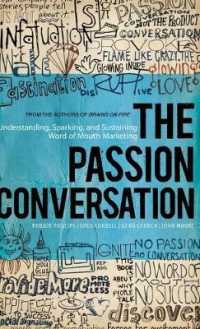Full Description
Men in stately black, women with
huge ruffs, children with golden rattles, old women with wizened faces,
and self-satisfied artists... These are the main players in just about
every portrait ever painted in the Southern Netherlands. From the15th to
the 17th centuries, the tract of land that we today call Flanders was
the economic, cultural, intellectual and financial heart of Europe. And
money flows - with everyone who could afford it investing in a portrait.
Today,
these cherished status symbols of the past have largely lost their
original significance. But beyond their functional and emotional
aspects, these portraits turn their subjects into gateways to the past.
This book takes masterpieces from the collection of The Phoebus
Foundation and outlines the broad context in which they came into being,
peeling back levels of meaning like the layers of an onion. Whether
captured in an impressive Rubens or Van Dyck, or an intimate portrait by
a forgotten artist, the persons portrayed were once flesh and blood,
each with their own peculiarities, hidden agendas and ambitions. Some
portraits are very personal and hyper-individual. Others are a little
dusty, the ladies and gentleman being children of their time. In most
cases, however, their dreams and aspirations are surprisingly timeless
and soberingly recognisable.
The Bold and the Beautiful
is an appointment with history: a meeting through portraiture with men
and women from bygone centuries. But for those willing to look closely,
the border between the present and the past is paper-thin.
Published on the occasion of the exhibition Blind Date.
Portretten met blikken en blozen, Autumn 2020, in
Snijders&Rockoxhuis Antwerp, curated by Dr. Katharina Van Cauteren
& Hildegard Van de Velde with a scenography by Walter Van
Beirendonck.








